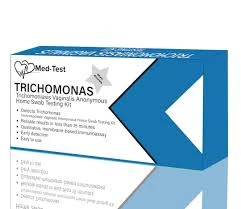
12-р сар . 05, 2024 06:01 Back to list
Understanding Pasteurellosis in Animals and Its Impact on Livestock Health and Management
Understanding Pasteurellosis in Animals Causes, Symptoms, and Management
Pasteurellosis is a significant infectious disease affecting various animal species. Caused by bacteria of the genus *Pasteurella*, particularly *Pasteurella multocida* and *Pasteurella hemolytica*, this disease poses serious health risks in both domestic and wild animals. It is crucial for animal owners, veterinarians, and suppliers to understand the implications of this disease, including its transmission, symptoms, and preventive measures.
Causes and Transmission
*Pasteurella* bacteria are commonly found in the oral cavity and respiratory tracts of healthy animals; they can become pathogenic under certain conditions. The infection is often triggered by stress, injury, or concurrent diseases that weaken the animal's immune system. High-risk groups include animals that are overcrowded, have poor ventilation, or are transported for extended periods.
The primary mode of transmission is through direct contact with infected animals or contaminated environments. It can also spread through bites or scratches from infected animals. Notably, specific species such as cattle, sheep, goats, pigs, and even domestic pets like cats and dogs are particularly susceptible to pasteurellosis, leading to varying clinical manifestations.
Symptoms to Watch For
Symptoms of pasteurellosis can differ based on the species and the site of infection. In general, signs may include
1. Respiratory Issues Difficulty breathing, nasal discharge, and coughing are common. In livestock, these symptoms can escalate to pneumonia, making early detection crucial. 2. Fever Infected animals may experience a rise in body temperature, which can often signal an underlying infection.
3. Oral and Dental Problems Infections can lead to abscesses in the mouth or other dental issues that are particularly common in animals like dogs and cats.
4. Sudden Death In severe cases, particularly in poultry and swine, pasteurellosis can lead to sudden death without any prior symptoms, creating challenges for farmers in understanding herd health.
5. Systemic Illness In more severe cases, the bacteria can spread systemically, leading to septicemia and affecting multiple organ systems.
pasteurellosis in animals suppliers

Diagnosis and Treatment
Effective diagnosis of pasteurellosis involves clinical observation, history-taking, and laboratory tests to confirm the presence of *Pasteurella* bacteria. Veterinarians may recommend cultures and sensitivity tests to determine the best antibiotic treatment.
Treatment typically involves antibiotics to combat the bacterial infection. Commonly used antibiotics include tetracyclines, sulfonamides, and penicillins. Additionally, supportive care such as anti-inflammatories and fluids may be necessary, particularly in severely affected animals.
Prevention Strategies
Preventing pasteurellosis requires a multifaceted approach, including
- Good Management Practices Maintaining proper ventilation, reducing crowding, and ensuring adequate nutrition and hydration can help minimize stress and prevent outbreaks.
- Vaccination Vaccines are available for certain species and can provide good protection against *Pasteurella* infections. It is best to consult with a veterinarian to determine the appropriate vaccine protocol for your animals.
- Biosecurity Measures Implementing strict biosecurity measures can help prevent the introduction and spread of *Pasteurella* within herds or flocks, including isolating new or sick animals.
Conclusion
Understanding pasteurellosis is essential for anyone involved in animal husbandry, veterinary care, or animal supply industries. By recognizing the causes, early symptoms, and implementing preventive measures, the risk of outbreaks can be greatly reduced. Continuous education and proactive management are key to ensuring the health and welfare of animals, ultimately leading to better overall productivity and economic stability within the agricultural sector.
-
Premium Suckling Piglet for Sale - Trusted Manufacturers & Suppliers Factory Price
NewsJul.06,2025
-
Premium Adolescent Chicken Supplier & Manufacturer Leading Adolescent Chicken Factory
NewsJul.06,2025
-
Premium Liquid-Postbiotic Leading Manufacturer, Supplier, and Factory Solutions
NewsJul.06,2025
-
Enterococcus Faecalis Mold Remover - Leading Manufacturers & Suppliers, Trusted Factories
NewsJul.05,2025
-
Premium Color-Enhancing Fish Feed Leading Manufacturer & Supplier Factory
NewsJul.05,2025
-
High-Quality Porcine Toxoplasmosis Solutions - Trusted Manufacturers & Suppliers
NewsJul.05,2025




